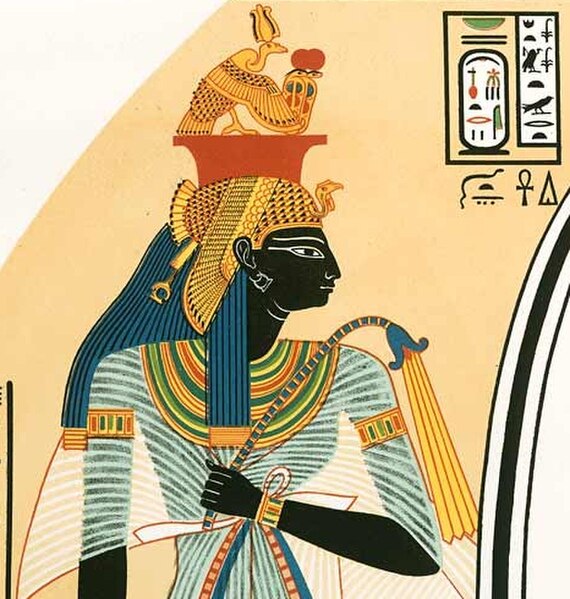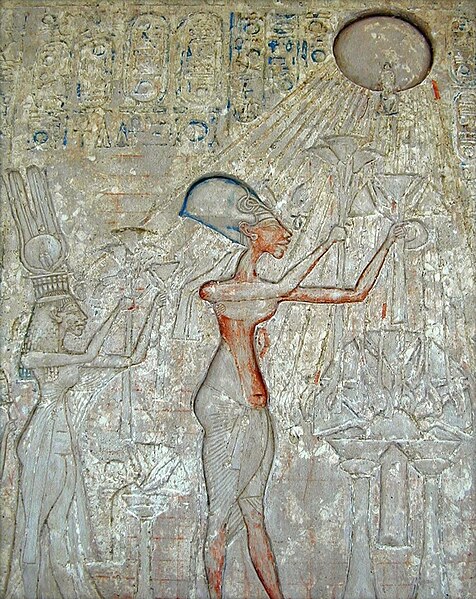The Amarna Period was an era of Egyptian history during the later half of the Eighteenth Dynasty when the royal residence of the pharaoh and his queen was shifted to Akhetaten in what is now Amarna. It was marked by the reign of Amenhotep IV, who changed his name to Akhenaten in order to reflect the dramatic change of Egypt's polytheistic religion into one where the sun disc Aten was worshipped over all other gods. The Egyptian pantheon was restored under Akhenaten's successor, Tutankhamun.
A relief of a royal couple in the Amarna-period style; figures may be Akhenaten and Nefertiti, Smenkhkare and Meritaten, or Tutankhamen and Ankhesenamun; Egyptian Museum of Berlin.
Queen Tiye, matriarch of the Amarna Dynasty. She was the mother of Akhenaten and wife of Amenhotep III. She mainly ran Egypt's affairs of state for her son.
Akhenaten, born Amenhotep IV, began a religious revolution in which he declared Aten was a supreme god and turned his back on the old traditions. He moved the capital to Akhetaten.
Queen Nefertiti, the daughter of Ay, married Akhenaten. Her role in daily life at the court soon extended from Great Royal Wife to that of a co-regent. It is also possible that she may have ruled Egypt in her own right as pharaoh, Neferneferuaten.
Eighteenth Dynasty of Egypt
The Eighteenth Dynasty of Egypt is classified as the first dynasty of the New Kingdom of Egypt, the era in which ancient Egypt achieved the peak of its power. The Eighteenth Dynasty spanned the period from 1550/1549 to 1292 BC. This dynasty is also known as the Thutmoside Dynasty) for the four pharaohs named Thutmose.
Ahmose-Nefertari. Ahmose-Nefertari was the daughter of Seqenenre Tao, a 17th dynasty king who rose up against the Hyksos. Her brother Ahmose, expelled the Hyksos, and she became queen of a united Egypt. She was deified after she died.
Head of an Early Eighteenth Dynasty King, depicting either Ahmose I, Amenhotep I or Thutmose I, c. 1539–1493 BC, 37.38E, Brooklyn Museum
Akhenaten and his family adoring the Aten. Second from the left is Meritaten, daughter of Akhenaten.
Block Statue of the Second Prophet of Amun Ay, c. 1336–1327 BC, 66.174.1, Brooklyn Museum








